Today is the eighth day of the first lunar month in 2025, and also the first day of work. First, I wish everyone a prosperous start to the year and may things go smoothly!
As usual, the author has returned with an annual article. This habit started in 2017, where the author attempts to exchange ideas and thoughts with those in and following the carbon neutrality field, recording major events and good ideas from the past year, and looking forward to new ideas in the new year for carbon neutrality, seizing new trends, and jointly promoting the global carbon neutrality process.
In 2024, we experienced the hottest year on record, and on July 22, 2024, the world experienced the hottest day ever, with a global average temperature of 17.16°C. Facing increasingly severe challenges, the global response to climate change has accelerated, whether it’s the NCQG agreement reached at COP29 at the end of the year in Azerbaijan, or the密集 rollout of domestic policies on carbon footprints and carbon trading, all have sent positive signals; enterprises are also constantly innovating in the field of carbon neutrality, with more and more low-carbon and carbon-neutral products appearing as consumer options. However, Trump's return and his Day 1 announcement of withdrawing from the "Paris Agreement" added many uncertainties to the future cycle, and the downward pressure on the global economy, including China's economy, will also impact carbon neutrality. How to turn passivity into initiative still requires our continuous thinking and exploration of ways and paths.
For 2025, we all have many judgments and expectations. Next, we will discuss six hot topics regarding the development of the carbon neutrality industry in 2025.
- Sustainable development will be the engine driving future global economic growth
- The drivers behind corporate carbon neutrality actions
- Enterprises will enter the deep waters of carbon neutrality, and carbon reduction can no longer wait
- Product carbon footprint will become the top priority for governments and enterprises in 2025
- How enterprises respond to global carbon footprint competition
- 2025 will be a watershed year for global carbon neutrality
1. Sustainable development will be the engine driving future global economic growth
During the Spring Festival, the "National Hero" DeepSeek summarized the most promising industries for 2025:

"Technology-driven fields and sustainable development fields", put more plainly, are AI and carbon neutrality.
Wu Xiaobo mentioned in his decade-long speech that "Carbon neutrality is not just icing on the cake, but a focal point of global trade competition facing the future."
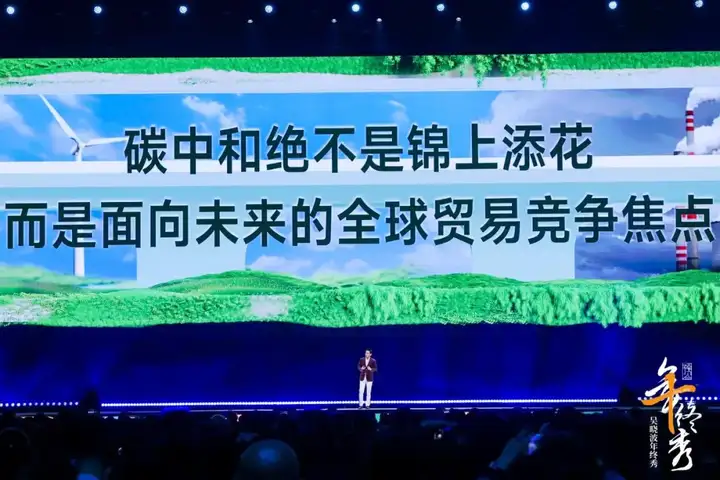
The current economy remains in a downward cycle, and the trend of consumption downgrading cannot be reversed, with the existing market being continuously squeezed. Where is the new incremental market? The circular economy and second-hand products may see new growth momentum, and near-expiry products will attract more consumers due to their discounted prices. The starting point of second-hand goods and near-expiry products is price affordability, but essentially they both reduce the carbon emissions of the last and first links in the product life cycle (waste disposal and raw materials).
For followers of the carbon neutrality sector, choosing the carbon neutrality industry is clearly wise, laying out and delving into blue ocean areas, and it is believed that corresponding returns will be gained.
2. The drivers behind corporate carbon neutrality actions
Why do companies engage in carbon neutrality actions? This is a question that people in the carbon circle might ponder every day, crucially important. The answer to this question may vary depending on time, place, and personal background. Here are some personal views from the author. Last June, the author visited Christian, founder of Watershed in Silicon Valley and had a lively and friendly exchange.
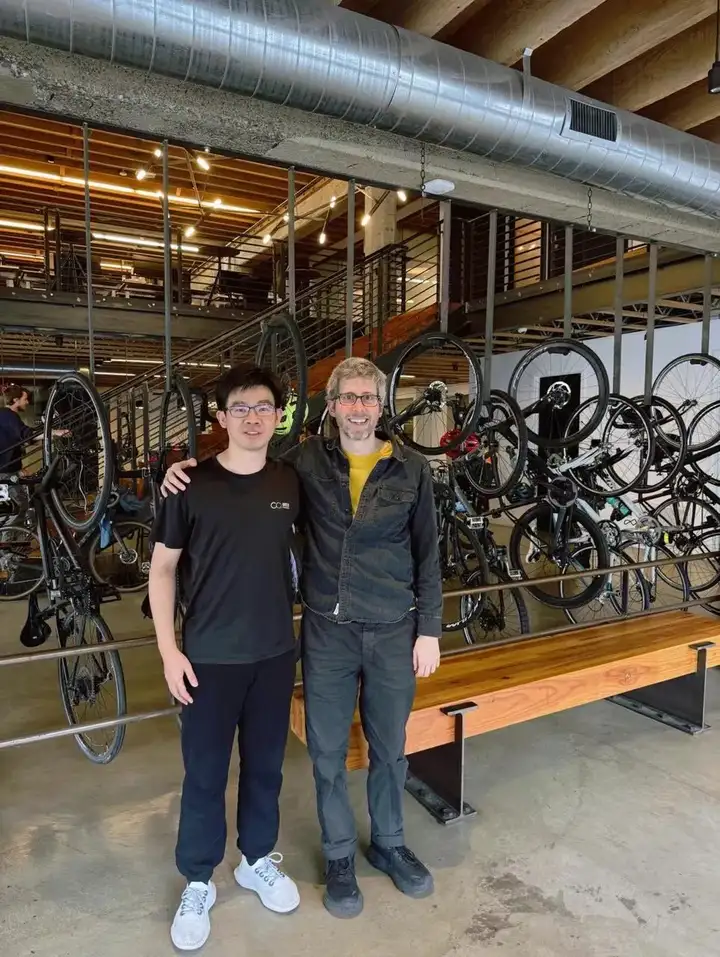
A very Silicon Valley-style but also eco-friendly office, where employees mostly commute by bike
We discussed in detail around the "five core drivers of corporate carbon neutrality" in the meeting room, astonishingly, we both wrote down the five keywords "policy (Policy), customer (Client), consumer (Consumer), investor (Investor), employee (Employee)," and then ranked them by priority.
Christian:
1. Customer; 2. Consumer; 3. Investor; 4. Policy (will soon move up); 5. Employee;
Author:
1. Customer; 2. Policy; 3. Investor; 4. Consumer (will become number one in the future); 5. Employee;
We both believe that customer demands are the biggest drivers pushing companies to take carbon neutrality actions and carbon management, which indeed reflects the fact that Chinese manufacturing companies conduct carbon audits, CDP, and SBTi mainly due to invitations or requirements from brand customers, which is a crucial market for China.
In China, a large part of enterprises carry out carbon neutrality actions under government mandatory control, so I placed "policy" in the second position; Christian held a different view, placing "policy" in the fourth position, but also believed that this might change with the government's regulatory intensity, possibly soon becoming one of the top three drivers for companies to engage in carbon neutrality (at that time, it was still the Biden era, Christian also said that even if the Trump era comes back, he still believes that policy will not rank among the top three for companies).
Regarding consumers, I believe that over time, they will definitely become the first driver for Chinese companies to engage in carbon neutrality actions, i.e., the ultimate goal of carbon neutrality, where it subtly integrates into everyone's lives. Christian believes that in the European and American markets, consumer-driven enterprise carbon neutrality actions are quite strong, hence he placed it in the second position.
Interestingly, both of us included employees as one of the drivers for companies to engage in carbon neutrality actions, probably because we have encountered job seekers' questions about whether companies themselves engage in carbon neutrality during recruitment and their demand for corporate carbon neutrality. I believe that employee drive is something a company truly concerned with social impact needs to focus on, and any successful company cannot do without a high-density team that highly recognizes the company's values.
In 2025, corporate carbon neutrality actions will be driven by comprehensive factors such as international CBAM, EU Battery Law, domestic carbon footprint, carbon trading, brand enhancement, and ESG rating improvement. By this time next year, I hope to see consumers and employees’ ranking move higher, because we fundamentally want to see carbon neutrality driven by people and benefiting people.
3. Companies will enter the deep waters of carbon neutrality, and carbon reduction can no longer wait
In 2015, the Paris Agreement was signed, and in 2020, the country announced its dual carbon goals. The enthusiasm of international and domestic companies to respond to climate change has continued to rise. Everyone talks about corporate carbon neutrality, starting with carbon accounting, “no quantification, no management” has become deeply rooted in people's minds. After five years of laying the foundation, most companies with urgent needs have already built teams and possess basic carbon accounting and carbon management capabilities.

At the government level, the country has released an emission factor database and carbon emission calculation tools, providing infrastructure for corporate carbon accounting. Especially the free launch of the carbon emission calculation tool allows many companies to conveniently calculate the carbon emissions of their respective industries, although currently still based on domestic carbon accounting standards and criteria, differing from the international scope one, two, and three calculations.
Our team wants to express: infrastructure will gradually improve (standards, carbon emission factor databases, etc., everything needed will be available), and companies' carbon accounting capabilities will gradually strengthen. The real challenge will gradually shift from carbon accounting to carbon reduction and carbon neutrality. Companies will enter the deep waters of carbon neutrality, and carbon reduction can no longer wait.
For service institutions in the carbon circle, as the country gradually improves infrastructure, we also need to upgrade our services to meet the real and more urgent needs of companies in the future, providing high-value products and services to help more companies successfully achieve carbon reduction and move toward carbon neutrality.
2025 will be a turning point for many companies, many of which will formulate carbon neutrality plans for the next five years or even longer. And companies that have proposed SBTi will need to seriously take carbon reduction actions. One client we've served for eight years suddenly became very urgent last year, hoping we could provide very practical and targeted suggestions for reducing carbon emissions across various categories of Scope Three. Their clients strongly require to see clear paths and active measures taken by key suppliers in carbon reduction. Our team spent more than a month preparing a complete Scope Three reduction recommendation report for this company, which is believed to be a leading attempt in the industry.
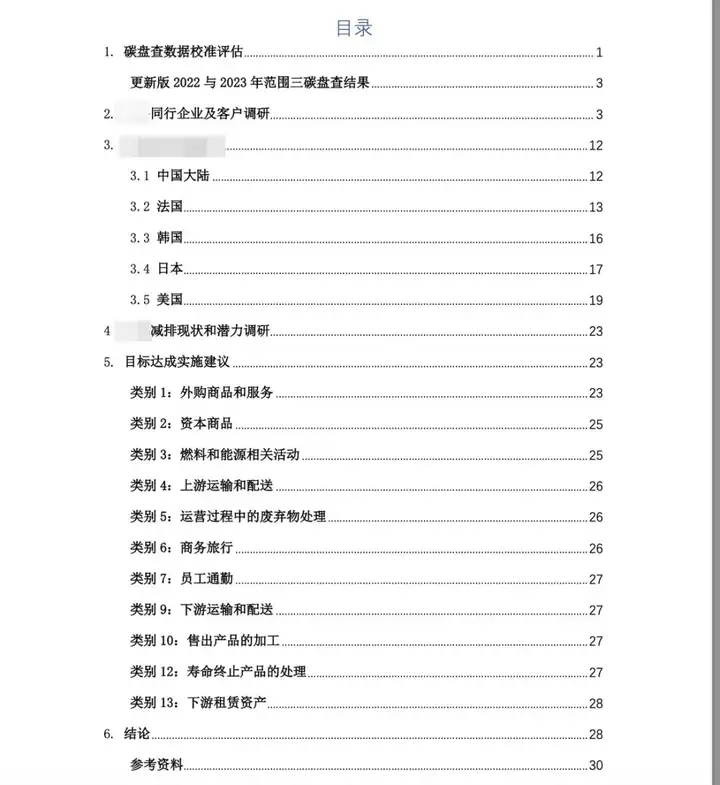
As a company specializing in corporate carbon management, Carbonstop has heavily invested in carbon reduction. The "carbon cloud" launched before the New Year with the "reduction plan" can also help companies implement effective carbon reduction actions at a high cost-effectiveness ratio to achieve their own carbon neutrality goals, carbon reduction goals, or SBTi goals.

In terms of carbon reduction, leading enterprises and institutions have begun various attempts, whether in factories, offices, or daily important meetings, there are many innovative opportunities for carbon reduction.
Although green meeting standards have been issued for many years, and guidelines for carbon-neutral large events have been widely applied in the industry, carbon-neutral meetings are everywhere, but the carbon-neutral meeting organized by this company can be considered a true industry exemplar. It encourages hundreds of supplier representatives to calculate their own carbon emissions on-site and find reasonable carbon reduction measures (such as encouraging low-carbon travel, using paper-packaged water, etc.) to achieve meeting carbon reduction, and encourages individuals to achieve personal carbon neutrality by purchasing high-quality carbon credits.

The influential Zhongguancun Forum also applies carbon reduction and carbon labeling to the extreme in meetings, such as recycled paper, recyclable plastic bottles, and other small behaviors that can involve participants, playing an important role in leading the carbon neutrality trend.

As a company focused on social impact, Carbonstop began promoting its own carbon reduction and carbon neutrality from the second year of its establishment. In 2024, we made several innovative moves.
1. We revamped our official website and launched a low-carbon mode version (by reducing high-definition large images, lowering server usage, and thereby reducing carbon emissions).

Regular mode

Low-carbon mode
2. We initiated the Annual Green Project (TAG), where in 2024 we promoted electronic invoices to replace paper invoices and affixed carbon labels in various corners of the office.


In 2025, we will launch a company-wide "collect waste, handcrafted reshaping" initiative. Employees can place unpolluted used milk tea bags, cup sleeves, coffee holders, paper bags, and packaging boxes into boxes stored in the company storage room.
On a certain day, we will use the "waste" collected together for a DIY activity, allowing these items that might have been discarded to be creatively reused through everyone's ingenuity.

The above carbon reduction actions in the office setting are welcome for anyone to adopt seriously :) Let’s jointly promote the carbon neutrality process and contribute our part.
As someone who starts the morning with a cup of Luckin Coffee and enjoys a Bajiang Chaji "Boya Jueshen" in the afternoon, I once influenced many colleagues at the company to drink Boya Jueshen. Initially, I chose Bajiang Chaji because I was inspired by the founder's arduous entrepreneurial story, and their milk tea products were indeed excellent! Moreover, it was very helpful for boosting energy during the afternoon work hours, so I became dependent on it, drinking over 200 cups throughout 2024. Since I’ve been named as one of the biggest coffee and milk tea consumers in the company, I've decided to quit Bajiang Chaji starting in 2025. This way, I can lead a healthier lifestyle and also reduce the carbon emissions from over 200 milk tea cups. Perhaps I can even encourage some colleagues to quit milk tea together, contributing to the company's carbon reduction efforts.
4. Product carbon footprint will become the top priority for governments and enterprises in 2025
In 2024, the hottest keyword in the carbon circle was undoubtedly "carbon footprint." Whether it's the central government, local governments, or industry-leading enterprises, all were actively involved in the field of carbon footprints! One of the most noteworthy policies is: By 2027, about 100 key product carbon footprint calculation rules and standards will be formulated and issued. By 2030, around 200 key product carbon footprint calculation rules and standards will be formulated and issued, and substantive participation in the international rule-making of product carbon footprints will be achieved.
The recent release of the "electricity carbon footprint factor" by the state also fulfilled the expectations of my team for the industry: basic energy and material data will be issued at the national level. Industry application data will give more play space to industry enterprises.
My team was deeply involved in several benchmark projects for product carbon footprints in 2024. These products whose carbon footprints were calculated reached tens of millions of people (for example, the carbon footprint of Fenmei Packaging, Anta shoe and clothing carbon footprint, Mengniu beverage carbon footprint, DuoZhuayu’s over 300,000 SKUs automatically calculating carbon footprints through Carbon Cloud SaaS, Zhenggu’s over 30 products calculating carbon footprints across the line, etc., all caused significant reactions in the industry). Next, I will show some relatively benchmark cases. First, various brands under Anta (main Anta brand, Fila, Kolon, Descente, etc.) launched dozens of shoe, clothing, and accessory products calculating carbon footprints and ultimately achieving carbon neutrality, including the carbon-neutral award-winning uniforms for the Chinese delegation at the 2024 Paris Olympics.
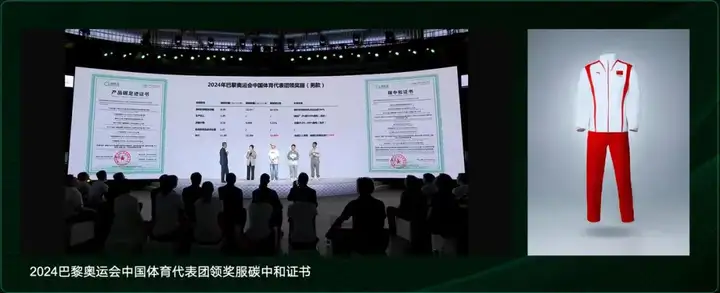
5. How companies respond to global carbon footprint competition
It is undeniable that the requirements for Chinese companies going overseas in the field of carbon footprints will gradually increase. Wu Xiaobo's New Year speech also highlighted a slide discussing how carbon footprints are the next "green tariff barrier," and disclosures based on standards like ISO 14067 or PEF will become the passport for Chinese companies going global.

Although the EU CBAM has remained hot over the years, institutions that have actually worked on CBAM projects may feel that despite the demand, the pressure isn't enough, leading companies to just fill out reports during the transition period, with many companies unwilling to spend even 10,000 yuan. As we enter the formal stage in 2026, my team believes companies affected by CBAM will gradually take it seriously and require higher-quality and higher-value consulting services and software products. At that time, it won’t be price that matters, but value!
In the U.S. market, Trump's immediate withdrawal from the Paris Agreement after taking office casts a shadow over global carbon neutrality for the next 4-5 years. However, every matter has its pros and cons. I shared my personal views on Trump's election win within the company:
Trump's victory will bring direct changes and impacts to the climate circle and carbon neutrality, with both positive and negative effects. Here are a few points for internal reference:
1. Trump advocates returning to fossil fuels, which will undoubtedly have a significant impact and setback on the new energy industry; many of America's previous climate commitments are unlikely to be fulfilled; these negative impacts are inevitable;
2. During Trump's first term (2016-2020), global green policies were objectively positive. The EU Green Deal proposed and increased emission reduction targets, and China announced its dual carbon strategy goal on September 22, 2020, laying a solid foundation for global climate change response. The trend of the times is irreversible;
3. During Biden's term (2020-2024), although the overall climate situation trended positively, it also triggered many chaos, such as campaign-style decarbonization, with everyone rushing into the carbon neutrality industry. Now, with Trump's return, it may be an opportunity for good currency to drive out bad currency. Speculators from the last cycle will retreat with the tide, while companies and institutions genuinely committed to carbon neutrality will gain their corresponding opportunities and rewards;
4. Times have changed. Unlike Trump's previous term, the international climate policy framework has now been established, with over 150 countries proposing carbon neutrality/net-zero goals, thousands of leading enterprises submitting SBTi, and tens of thousands of key enterprises beginning carbon disclosure, with more entities participating. These are irreversible trends;
5. For China, we advocate that carbon neutrality is not something others ask us to do, but something we must do ourselves. Indeed, the development of industries like new energy, electric vehicles, and batteries over the past few years has given China new opportunities. From the perspective of economic returns, a sense of responsibility for the common destiny of humanity, and global leadership, China will continue to firmly advance in the direction of carbon neutrality;
6. Climate change challenges are not just political. Increasingly frequent natural disasters pose greater threats to human survival. The objective reality of a 1.45-degree temperature rise in 2023 does not allow for a rollback of climate policies. Today's climate crisis is far more severe than it was eight years ago.
In terms of overseas strategies, Carbonstop is also going global with numerous clients. Starting in 2023, we began laying out in the European market and established a team in London, specifically serving EMEA region customers. Due to Trump's return, Silicon Valley carbon management startups like Watershed and Persefoni, to offset the decline in the U.S. market, have all entered the European market, making the European carbon management market increasingly crowded. Below, I share some views on global competition and cooperation:
1. The reason why the theme of carbon emissions has gained such attention is that I always believe it has two core attributes: quantifiability and globalization. Compared to other environmental themes, such as air pollution and water pollution, it is easier to verify improvements and easier to compare and resonate globally. Therefore, global topics require joint efforts and sincere cooperation from global enterprises to drive progress.
In 2024, I was deeply involved in the revision of the GHG Protocol Scope Three standard and met a group of top international experts in carbon accounting, from whom I benefited greatly. One of them is Sangwon Suh, Watershed's chief scientist and a professor at UC Santa Barbara. He previously co-founded Carbon Minds, which was later acquired by Watershed. When my European team bid for a Saudi Arabia carbon footprint project, they mentioned one of the competitors was Carbon Minds, saying they had a very capable expert named Sangwon Suh, which made my colleague wary.
I naturally wanted to meet such a remarkable person. Last June, when I went to Silicon Valley, I arranged to meet Sangwon, but unfortunately, he was attending his daughter's graduation ceremony and couldn't make it. Subsequently, whether in daily email communications or meetings at GHG Protocol (we happened to be in Group Scope 3), Sangwon was always courteous, highly knowledgeable, yet humble, transcending national boundaries in admiration and recognition. During a discussion on whether enterprises should choose a database or supplier-provided data in scope three carbon accounting, all viewpoints leaned towards choosing supplier-provided data. Only Sangwon stood up and said that choosing supplier data presupposes that suppliers can provide high-quality data. He mentioned that many suppliers he previously encountered didn't even have electricity meters, so expecting them to provide high-quality data was unrealistic. Thus, decisions should be based on actual situations, always opting for relatively high-quality data while continuously improving the carbon management capabilities of one's own factory and suppliers. Sangwon's knowledge and humility sharply contrast with a few professors in domestic universities (some professors pursue fame and fortune, knowing only a little but love to criticize everything). China lacks an expert like Sangwon. Regrettably, I still don't see any expert in China reaching or approaching Sangwon's level. Carbonstop is eager to recruit experts like Sangwon and will strengthen efforts to cultivate top-tier industry experts like him.

Speaking of supply chain data, in the future global carbon management market competition, whether it’s Watershed, Greenly, Persefoni, or Normative, they will all highly value the data from Chinese manufacturing suppliers. High-quality data from Chinese suppliers (for example, Scope Three requires suppliers to provide Cradle-to-Gate data) is also one of the most important links in promoting global carbon neutrality. Therefore, this also harbors infinite business opportunities, both for China's manufacturing enterprises (high-quality data wins more customer orders) and for China's carbon management companies (acquiring high-quality data from Chinese suppliers to gain a favorable position in the global carbon management competition).
2. DeepSeek emerged during the Spring Festival, becoming a national hero countering American AI, giving us much confidence and national pride. The competition between China and the U.S. in the AI field has entered a white-hot stage. A personal experience of mine was last June when I was invited as a representative of the Young Global Leaders of the World Economic Forum to attend an event at the White House. When applying for my U.S. visa, the interviewer noticed I studied computer science and repeatedly confirmed whether my work was related to AI. When asked what specific courses I took during my undergraduate and graduate studies, I blurted out "Machine Learning" and "Artificial Intelligence." The interviewer immediately said "Wait a minute," then went inside to consult with his supervisor about whether to issue me a visa. After repeated communication and efforts, I was finally handed a green form to return home and supplement information. It took another month of email communication and waiting before the doubts were resolved, allowing me to finally make the trip to the U.S. AI has revitalized the American economy, and it makes sense for them to be extra cautious against potential competitors like China. Another interesting story is that during my time at the White House, I bravely questioned President Biden's special assistant Daniel about how he viewed Sino-U.S. cooperation on climate change over the next five years. Perhaps this question was too difficult for him; he thought for almost half a minute, and the entire scene froze. He then responded, "The relationship between China and the U.S. is currently very poor, and cooperation on climate change depends on the state of Sino-U.S. relations themselves. But since addressing climate change is a common challenge for humanity, I believe win-win cooperation will still be the main trend in the future." This should be a reflection of the competitive-cooperative landscape between China and the U.S.

I questioned President Biden's special assistant at the White House
Recently, my team conducted research on the relationship between AI and carbon emissions. AI can help various industries reduce their carbon footprint through smart algorithms, but the training of large models themselves consumes a great deal of electricity, resulting in a much larger carbon footprint than in traditional internet and mobile internet eras.
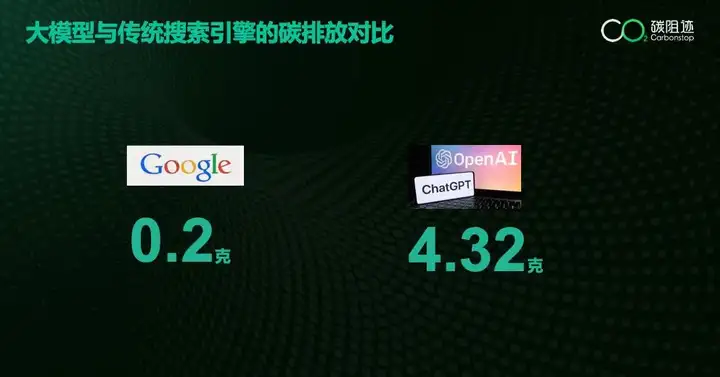
The carbon footprint of each retrieval of ChatGPT responses is more than 20 times that of a single Google search.
Companies that previously set ambitious carbon neutrality goals may now need to re-examine the feasibility of achieving these targets due to the arrival of the AI revolution, which generates far more carbon emissions than expected. For example, Microsoft’s original goal of achieving negative carbon emissions by 2030 and Amazon's original target of achieving net-zero emissions by 2040 might both require readjusting their goals and planning new paths.
DeepSeek's differentiated value not only lies in its training cost being only one-twentieth of ChatGPT, but also in significantly reducing resource usage and consumption during the training process, thereby greatly reducing its carbon footprint. As a company that applies AI in the carbon management sector early on, Carbonstop paid attention to DeepSeek early and adopted it as one of the foundational models for our Carbon AI in May 2024. This allows Carbonstop to develop its own AI products as sustainably as possible, which is also an important measure in practicing our own carbon neutrality.
DeepSeek's breakthrough has given all Chinese tech workers full confidence. DeepSeek represents Chinese private enterprises showing excellent competitiveness and fighting spirit globally. This will undoubtedly attract high attention from the national government, providing more support to private enterprises. This should be a significant blessing and potential benefit brought by the DeepSeek event to Chinese technology and private enterprises! China shouldn’t always follow others’ lead; we have the opportunity to break through globally.
In the field of carbon neutrality, emerging sectors such as new energy and electric vehicles in recent years have stood out in global competition, laying a solid foundation for carbon neutrality to become a cornerstone of China's development for the coming decades.
Carbon management is no different; we are also facing fierce international competition. The aforementioned European and American carbon management companies (Watershed, Greenly, etc.) are eyeing the global market with great interest, and Chinese carbon management companies must take up the challenge. Carbonstop carries a strong sense of mission, aiming to make Chinese enterprises stand out in the global carbon management market and ultimately achieve victory.
Competition is always accompanied by cooperation. My last meeting before the New Year was an online discussion with colleagues in the UK and partners in Kenya about implementing Marks & Spencer's flower carbon footprint project, an interesting collaboration spanning Europe, Asia, and Africa.

Collaborating with Kenyan partners to implement Marks & Spencer's flower carbon footprint calculation and emission reduction project
6. 2025 Will Be a Turning Point for Global Carbon Neutrality
2025 will be a turning point for global carbon neutrality, with positive signals such as the NCQG agreement reached in Azerbaijan in 2024 and the establishment of the Paris Agreement Article 6.4 global carbon market.
China will also update its NDC (Nationally Determined Contributions) in 2025. It is speculated that China is likely to propose an ambitious absolute carbon reduction target for 2035 this year (carbon emissions will peak by 2030, and absolute emissions will decrease by 2035), which will send a clear signal to industries and enterprises that absolute emission reductions are imminent.
Leading enterprises will remain the main force driving global carbon neutrality. For companies that have pledged carbon neutrality or net-zero emissions by 2030, 2025 and 2026 are critical periods for full-scale advancement, while those who ambitiously proposed achieving carbon neutrality by 2025 need to give it their all this year.
From the ESG perspective, the new version of the Hong Kong Stock Exchange's Listing Rules further clarifies the disclosure requirements for greenhouse gas emissions by Hong Kong-listed companies. The three major exchanges in China are also gradually tightening ESG disclosures for listed companies.
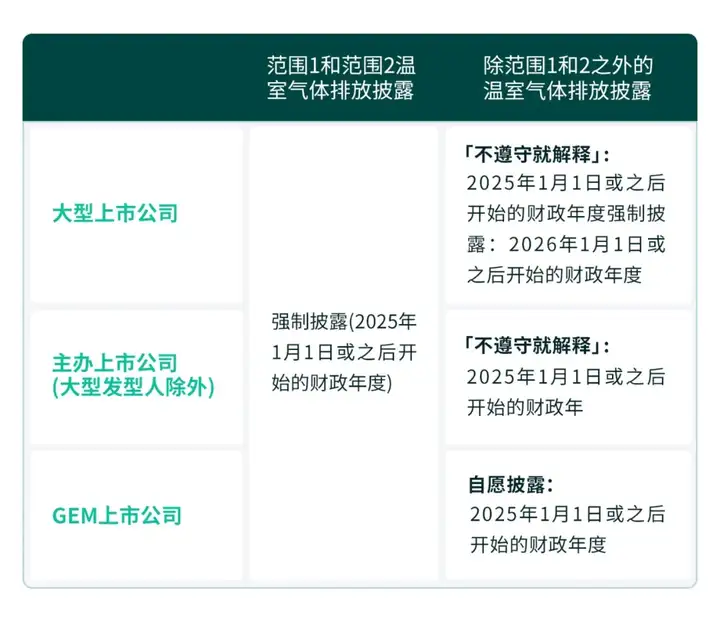
Hong Kong Stock Exchange Listing Rules
Today's world is filled with immense uncertainty, yet carbon neutrality remains one of the few extremely certain directions, worthy of our continued investment and participation. Carbon neutrality is a long-term endeavor that requires our perseverance and sustained passion!
The more confident we are about the future, the more patient we will be in the present! In 2025, let's hope we can write a brilliant chapter together for carbon neutrality.






